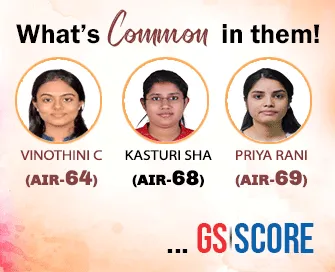

13th June 2025 (9 Topics)
Context
As part of India’s urban transformation vision for Viksit Bharat by 2047, enhancing urban mobility has become critical. The 2024–25 Union Budget introduced new schemes like PM e-Bus Sewa and PM e-Drive to boost electric public transport. However, concerns persist over insufficient bus availability, high costs of metro projects, and the economic inefficiency of e-buses, prompting renewed interest in alternatives like trams and trolleybuses.
India’s Growing Urban Mobility Pressure
- Rising Urbanisation Trend: By the 2060s, over 60% of India's population is expected to shift from low-productivity rural areas to high-productivity urban regions. This large-scale intra-national migration will exert immense pressure on city infrastructure, especially transport systems.
- Gaps in Smart Urbanisation: India’s urban planning lags behind countries like China in developing new smart cities, forcing existing metros to expand uncontrollably. This unplanned expansion complicates worker mobility and escalates the strain on current transport networks.
- Limited Access to Public Transit: According to the 2024–25 Economic Survey, only 37% of Indian urban residents have access to public transport, compared to over 50% in Brazil and China. The lack of efficient last-mile connectivity further weakens overall mobility efficiency.
Current Policy Interventions and Their Limits
- E-Bus and E-Drive Schemes: The 2024–25 Budget launched the PM e-Bus Sewa and PM e-Drive schemes, targeting procurement of 14,000 e-buses and 1 lakh e-rickshaws/trucks/ambulances. However, India needs 2 lakh urban buses, while only 35,000 (including e-buses) are operational—just 17.5% of the requirement.
- Metro Network Investment vs Ridership Reality: Although metros receive significant government funding, most projects haven’t recovered fixed and operational costs due to lower-than-expected ridership. Commuters remain fare-sensitive, and poor last-mile connectivity deters metro use.
- Inadequate Subsidy Support: Unlike developed nations, India cannot offer large recurring subsidies to keep metro fares low. Hence, cost recovery and public usage remain key concerns in the long-term financial viability of high-cost transit infrastructure.
The Case for Alternative Transit Models
- Exploring Tram and Trolleybus Viability: Trams demonstrate 45% profitability over a 70-year lifecycle, while e-buses result in an 82% net loss due to high replacement and operating costs. Trolleybuses show minimal loss, making both options worthy of policy consideration for long-term sustainability.
- Budget Allocation Gaps and Private Sector Apathy: Despite increased budget allocations for e-buses, private sector interest remains weak due to uncertain returns. Policymakers continue focusing on costlier electric models, often sidelining cost-effective options like trams and trolleybuses.
- Learning from Kochi’s Tram Revival Plan: Kochi’s pilot initiative to reintroduce trams could be a landmark move, combining heritage revival with modern sustainability goals. Such models, if replicated, can reduce dependence on subsidies and offer a climate-aligned urban transport alternative.
Practice Question:
Q. “India’s urban transport policy remains overly focused on high-cost infrastructure without fully evaluating lifecycle costs and financial sustainability.” Critically analyse this statement in the context of e-bus systems, metro projects, and alternative modes like trams and trolleybuses.

